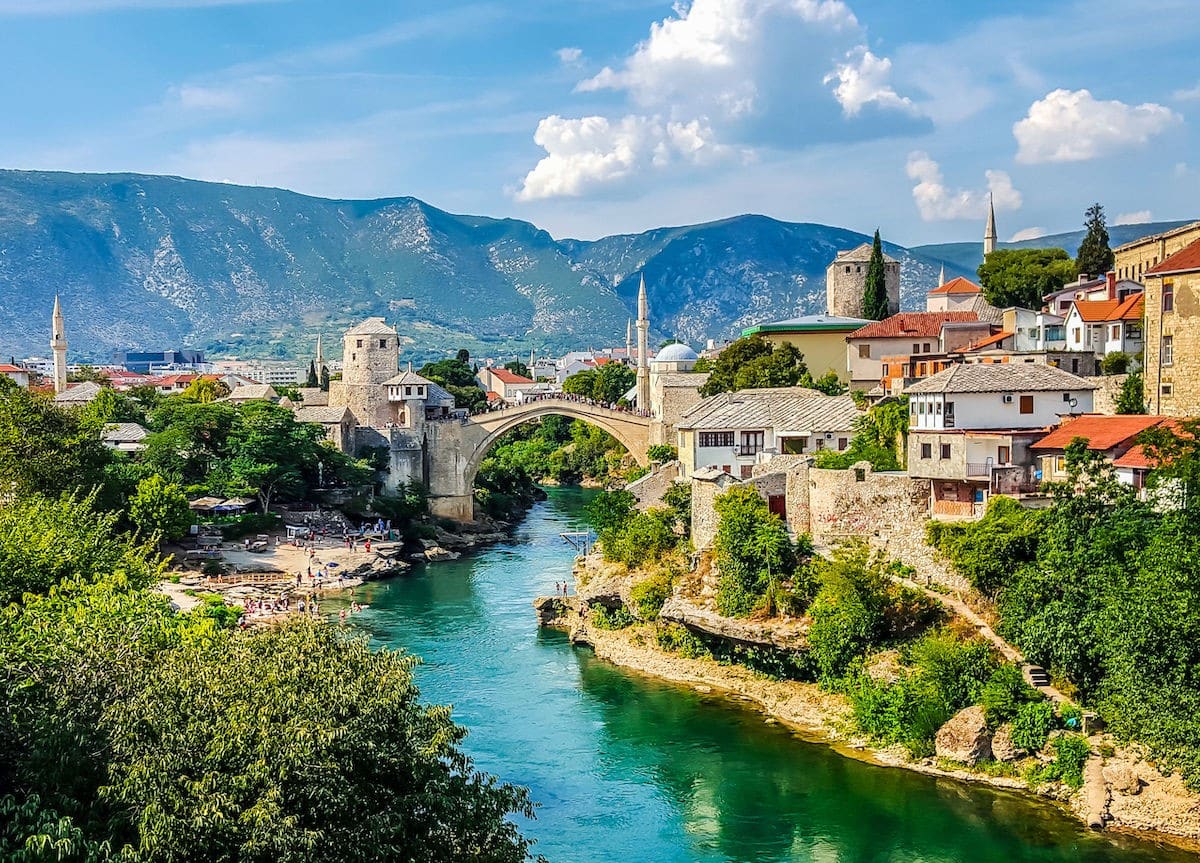Bosnia and Herzegovina is a country in the Balkans in southeastern Europe. The country was a part of Yugoslavia until it declared independence in 1992. Its history of a foreign power and cultural dominance makes it an intriguing place to visit. The country’s Ottoman and Austro-Hungarian histories are woven into the landscape. It has fantastic tourist sites, including historical landmarks, modern urban centers, mountains, and rainforests. Sarajevo, the capital of Bosnia and Herzegovina, is well-known for its ethnic and religious variety, making it one of the best cities in the world to visit. The Bosnian War also took place there in the 1990s, which the Bosnians still commemorate.
Bosnia is known for its historical background, especially the assassination of Archduke Franz Ferdinand. After World War II, the Bosnian War shocked Europe in 1992. However, Bosnia still stood with its countless landmarks, such as the Mostar, Nuclear Bunk, Sarajevo, the Sarajevo Festival, its mouthwatering cuisines, and the Perucica rainforest.
The Bosnian War
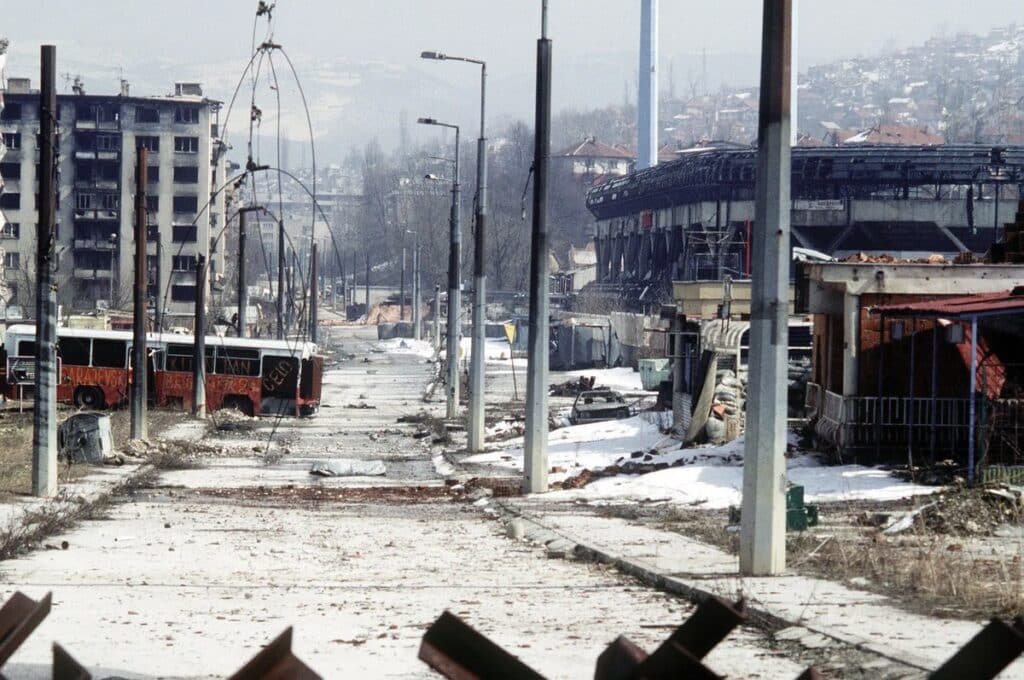
The Bosnian War occurred between 1992 and 1995. This is considered the worst European war after World War II. Under Slobodan Milosevic’s leadership, Bosnian Serb forces engaged in a campaign of war crimes and genocide. As part of an ethnic cleansing effort, around 20,000 to 50,000 women were raped in Bosnia throughout the conflict. Over 2 million Bosnians were displaced, and 100,000 people died. The conflict left the nation with a large stockpile of unexploded landmines, racial tensions, and infrastructural damage. To commemorate this, Bosnians built memorials and monuments. The war ended in 1995 through the Dayton Peace Agreement.
The Republic of Bosnia and Herzegovina
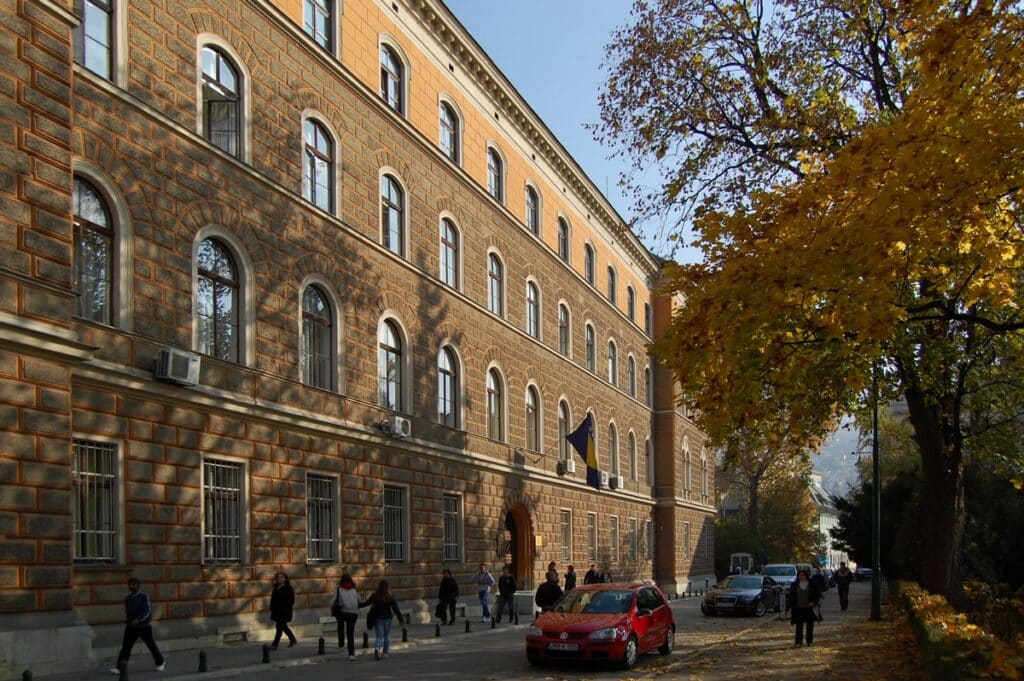
Though many people call the nation Bosnia, the country’s official name is actually Bosnia and Herzegovina. The country claimed its independence from Yugoslavia, instigating the war in 1992. Bosnia and Herzegovina have no distinct borders. Herzegovina is a region in the southeast that covers the country from the south to the west. The larger portion from the northern and central areas refers to Bosnia. The two regions are distinct in their ethnic make-ups. Bosnia has a larger Bosniak and Serb population, whereas Herzegovina is home to more Bosniaks and Croats.
The Assassination That Led to World War I
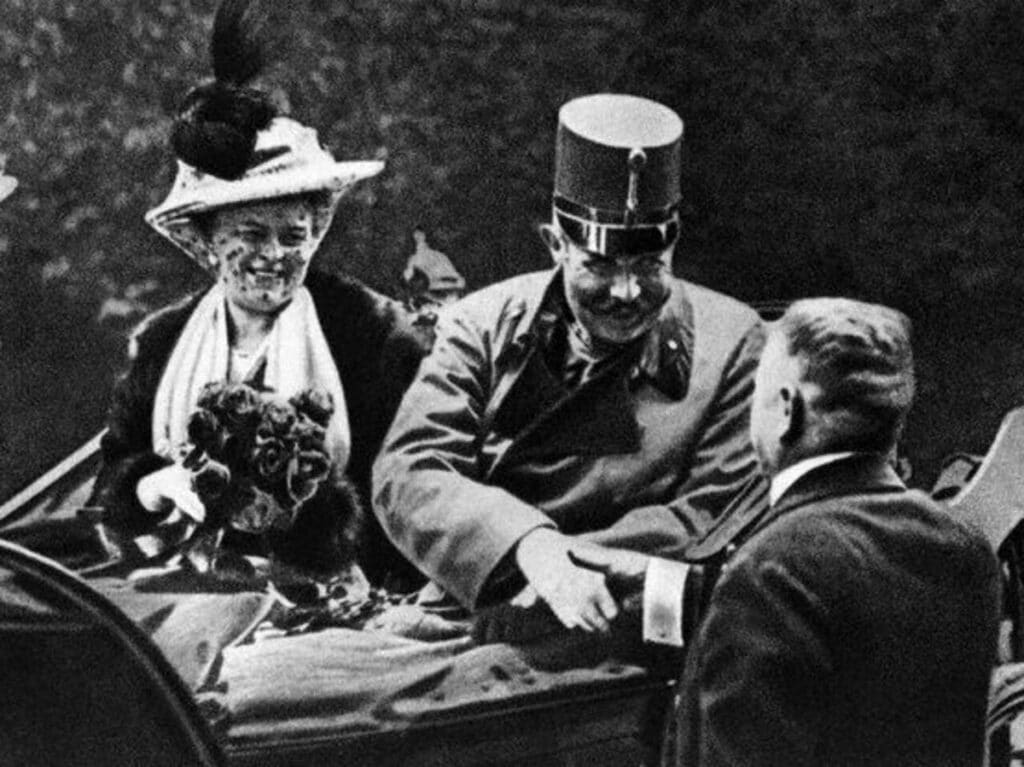
Bosnia is well-known as the site of the infamous murder that sparked the start of World War I. Gavrilo Princip, a 19-year-old Bosnian Serb, opened fire on the motorcade carrying Archduke Franz Ferdinand, heir to the Austrian monarchy, and Sophie, his wife. The royal family was traveling through the streets of Sarajevo when the activist shot them. After Austria-Hungary declared war on Serbia a month later, Europe quickly became a battlefield. The Bosnian Crisis of 1908–1909 set the stage for the assassination. The Serbian secret organization, Black Hand, taught about terrorism. Some regarded Gavrilo as a national hero.
The Scars of the War Are Still Visible in Mostar
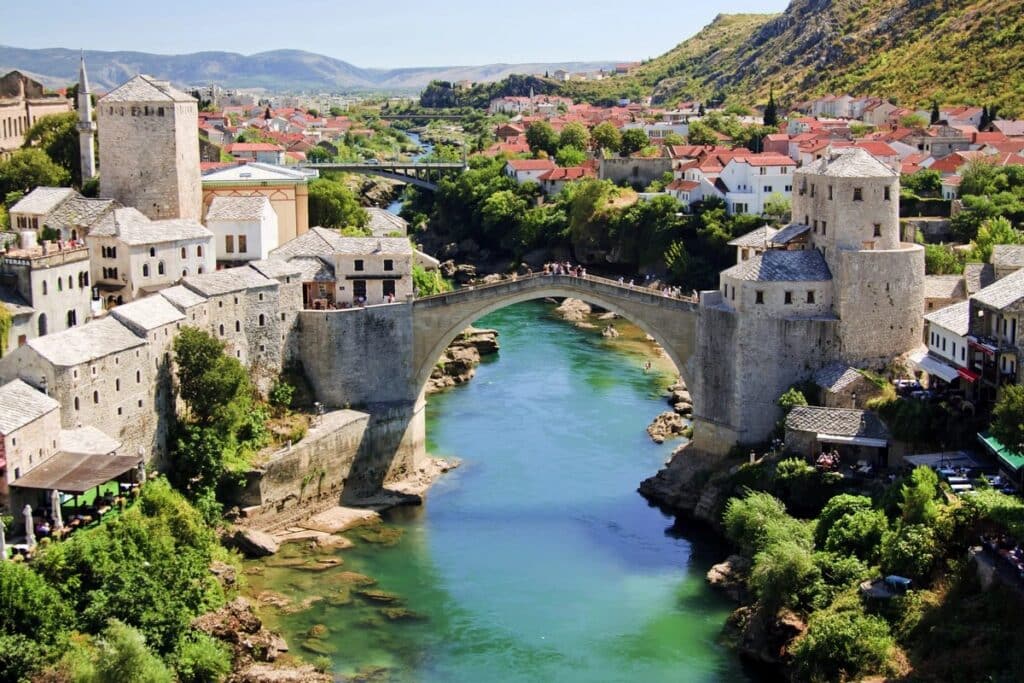
Mostar is one of the biggest cities in Bosnia and Herzegovina. This stunning metropolis has vital cultural and historical importance to the whole country. Many pivotal battles and other events of the Bosnian War took place in the city. Unfortunately, the effects of the conflict are still very much in evidence today. Gunfire has destroyed several city buildings, including the historic bridge district. Bosniaks tend to live on the eastern bank of the Mostar river, whereas Croats choose the western side. Even though it has seen recent conflict and ethnic tensions, the city is safe and worth visiting.
180,000 Landmines Are Yet to Be Discovered
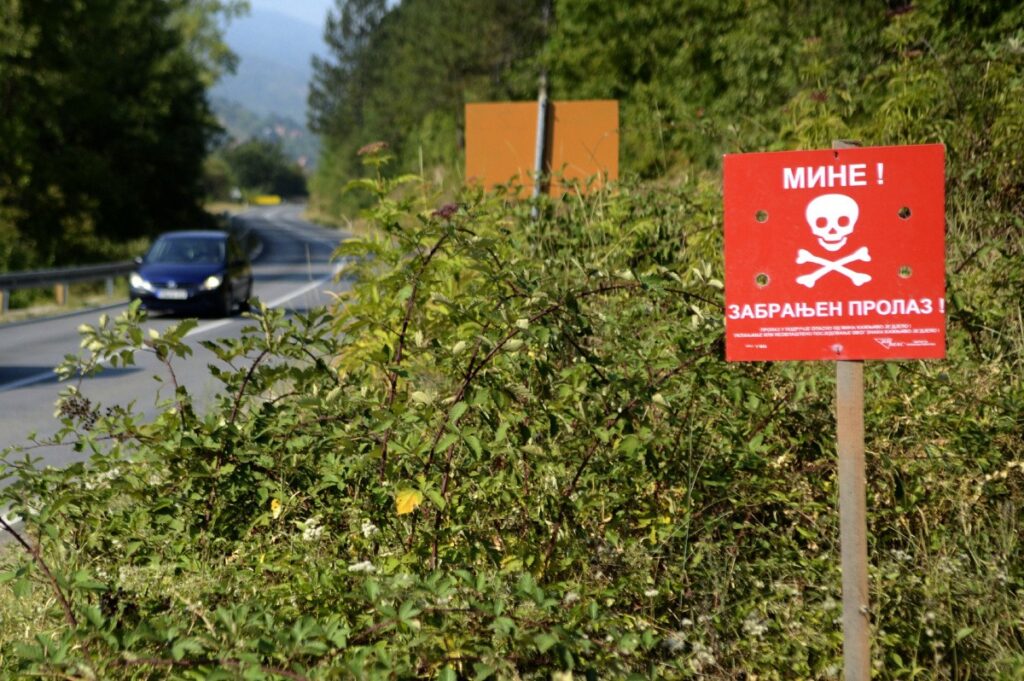
Wartime contamination by unexploded landmines is a major issue in Bosnia and Herzegovina. There is a total of 180,000 landmines remaining throughout 2.2% of the country’s territory. Although landmine-related deaths and injuries are decreasing annually, government, NGO, and NATO teams still have a difficult time clearing the nation of all mines. Landmines are deployed defensively to prevent enemy reinforcements from reaching vital locations during the Bosnian War. Almost 130,000 were successfully removed, but 617 people died in the process. Since many of them are made of plastic, they are water resistant and become deadlier when submerged.
Coffee Is Best Anytime of the Day
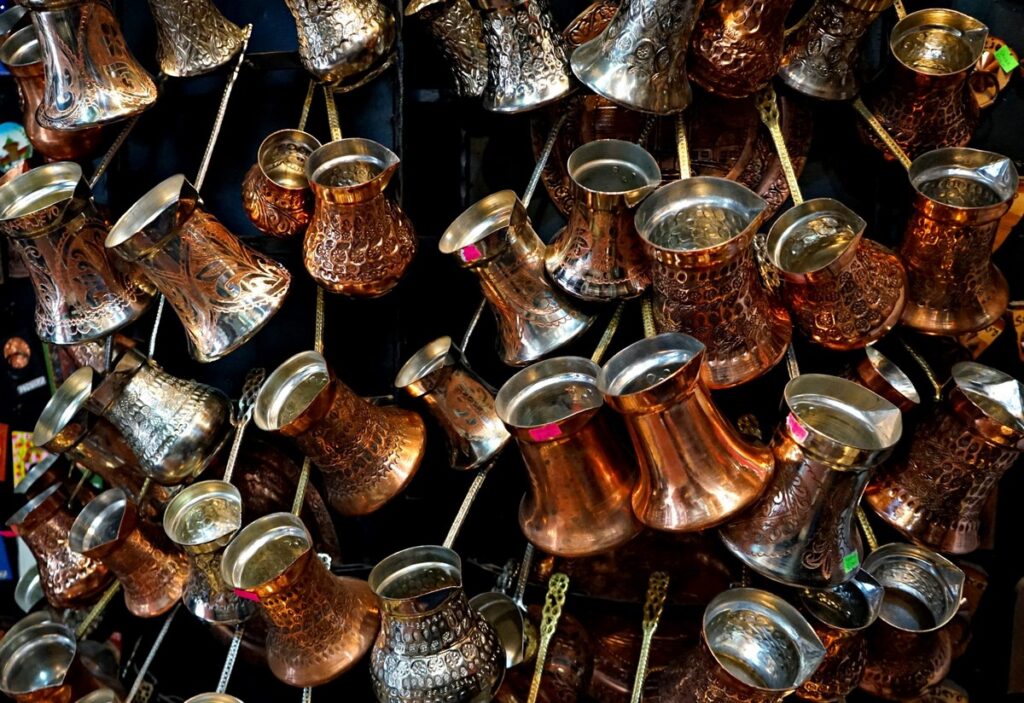
Bosnia ranks 10th for coffee consumption worldwide. Coffee drinking is a cultural norm and daily social activity among residents. It’s not unusual if a Bosnian friend offers a break from your busy schedule to relax and have a cup of coffee together. Bosnia was a part of the Ottoman Empire from the 1500s until the 1700s. The Islamic religion forbids alcoholic beverages. Hence coffee became the beverage of choice for social gatherings. Bosnian coffee is typically brewed in a tiny copper kettle called an ibrik or dezva. They boil water and finely ground coffee over a fire and then sweeten it.
The Jerusalem of Europe
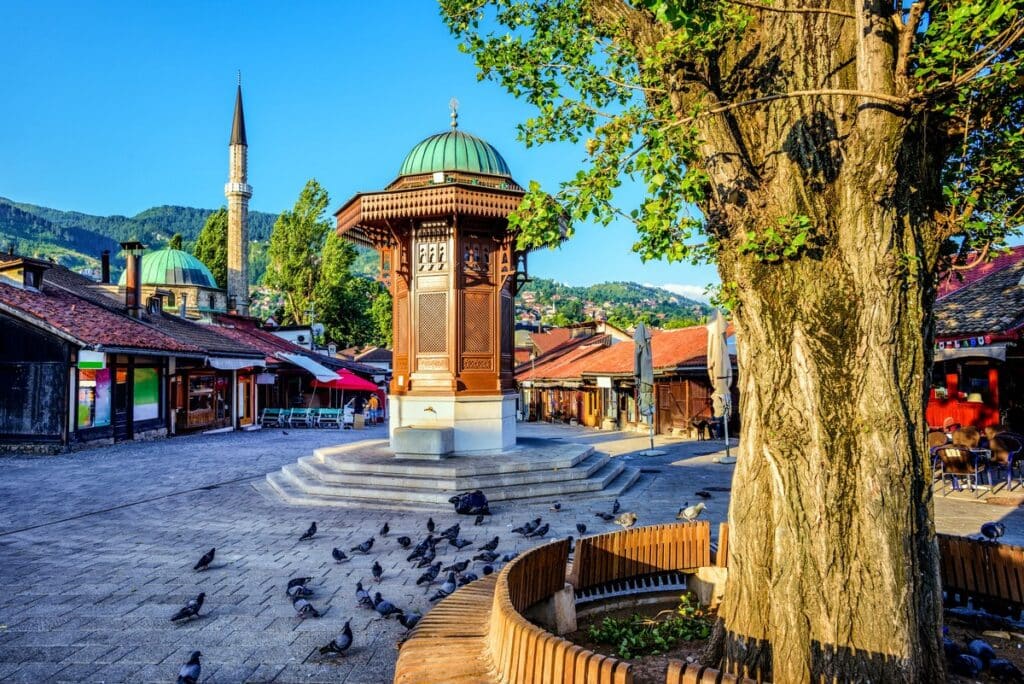
Sarajevo is the capital city of Bosnia and Herzegovina. It was also the Ottoman Empire’s most prosperous city. Famous for its religious and cultural variety, it is one of the Balkans’ most essential and notable metropolitan centers. This is why it’s often referred to as Europe’s Jerusalem. It serves as the nation’s political, economic, and cultural hub. You can find the country’s top tourist attractions here, such as the legacy of the Winter Olympics, the Sarajevo Film Festival, and countless other museums. This is also the center of the Bosnian War and where the heir of Autria-Hungary was shot.
The Lungs of Europe Are in Bosnia
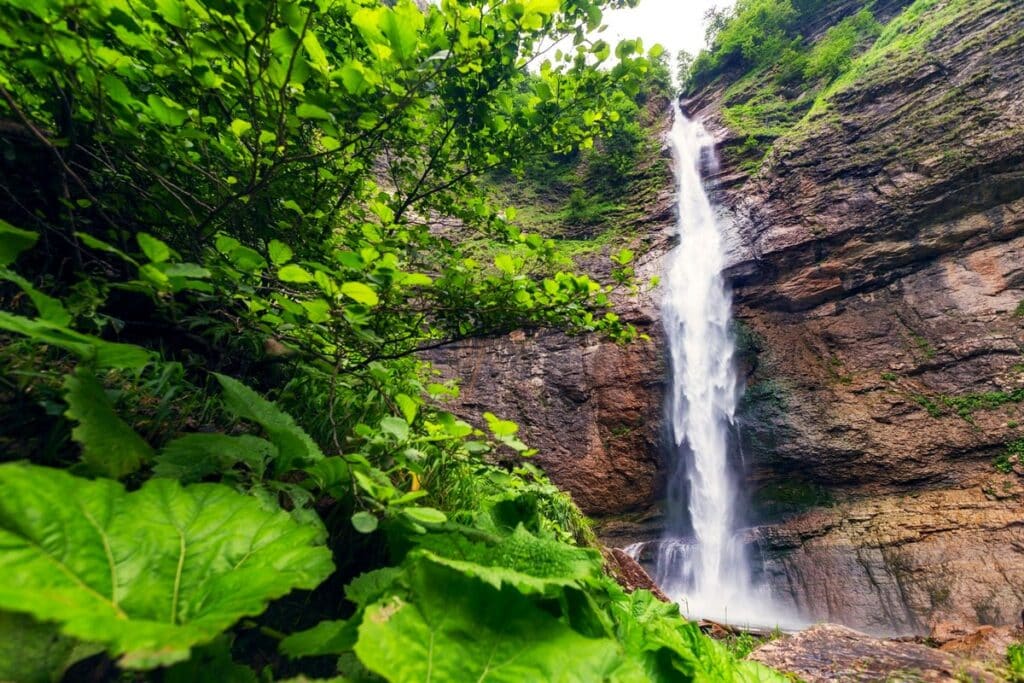
Perucica, in the southeast of Bosnia and Herzegovina, is home to one of Europe’s few surviving rainforests. Some call the Perucica rainforest the “lungs of Europe.” There are trees here that are more than 300 years old. It is renowned for its natural splendor and a protected nature reserve open only for scientific research and educational purposes. Only those accompanied by a certified guide are allowed to enter. You may employ a local ranger since certain areas are too dense. The most magnificent sight is at the peak of Mount Zelengora, where you can view the European Yosemite from above.
The Bobsleigh and Luge Track
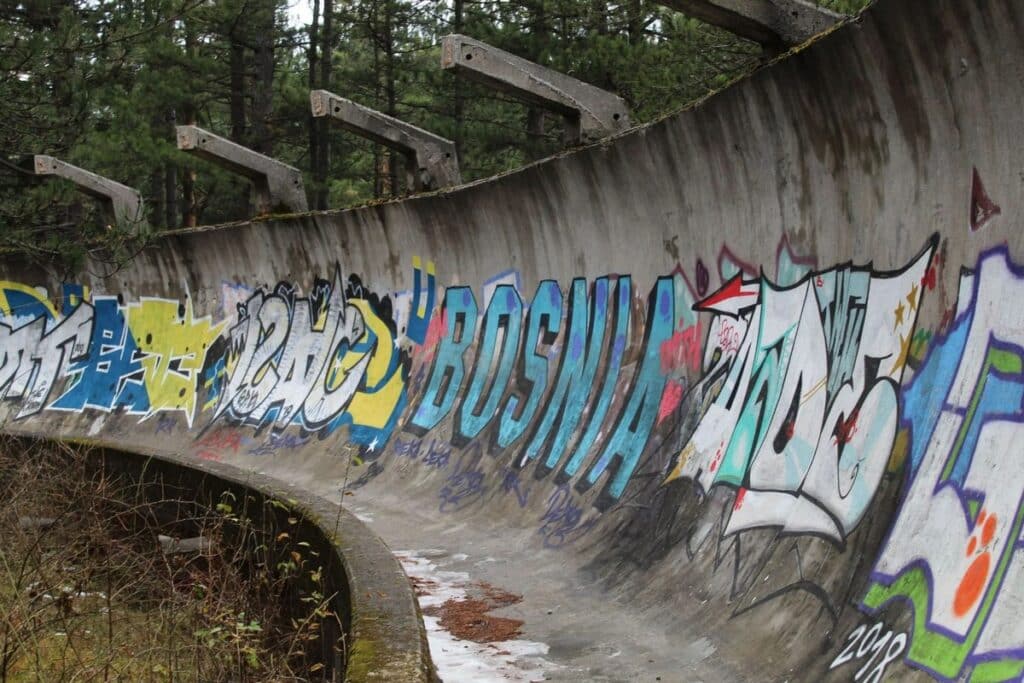
The bobsleigh and luge track is the most well-known remnant of the 1984 Winter Olympics. You can find it on a mountaintop on the outskirts of Sarajevo. The course served as the venue for subsequent World Cup competitions until the start of the Bosnian War. After being destroyed in the battle and left unused for years, the track attracted the attention of both residents and curious tourists. They covered the remaining portions with graffiti and utilized them as a picturesque place. Since completing the rehabilitation project in 2018, the track will be ready for use in winter events once again.
International Celebrities Attend the Sarajevo Festival

There are only 18 cities worldwide known as “Cities of Film.” One of these cities is Sarajevo in Bosnia. Known as a cultural hub in the Balkans, the city hosts an annual film festival that attracts many tourists and enthusiasts worldwide. The festival’s remarkable start in 1993, when Sarajevo was under siege, is a pivotal component of the narrative. Attendance was minimal the first year because of the conflict but increased dramatically. In fact, international stars like Angelina Jolie, Morgan Freeman, and Orlando Bloom also participated in the event. Sarajevo’s film festival features both big-budget features and independent shorts.
Tito and His Nuclear Bunker
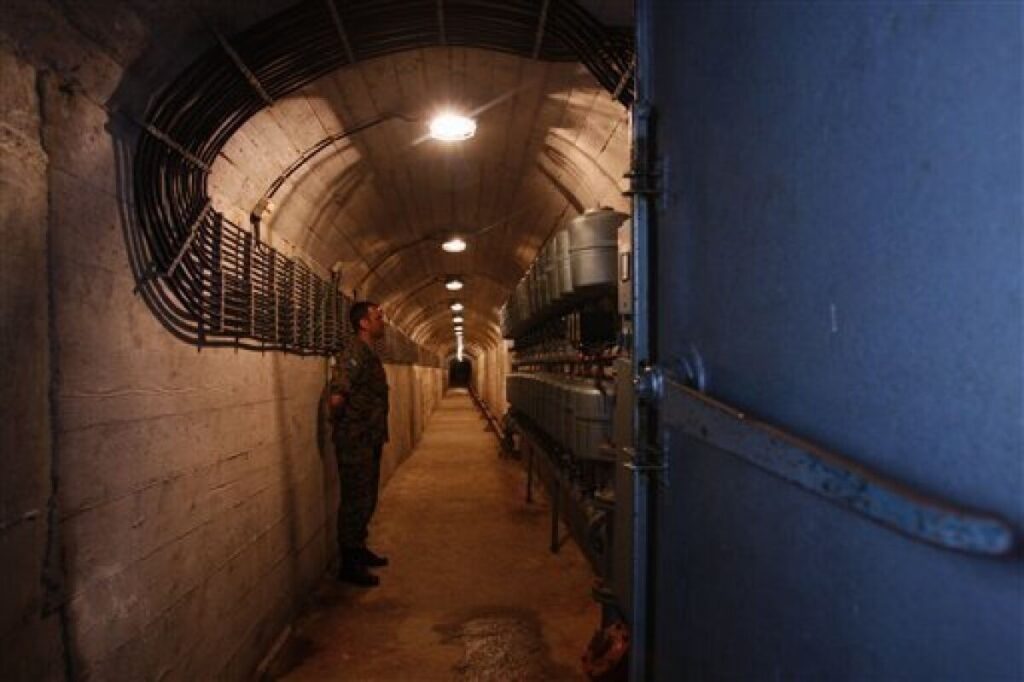
Tito, or Josip Broz, was Yugoslavia’s leader for many years. Many Bosnians, especially in the wake of the conflict, saw him as the uniting figure they had hoped for. You can find many Tito memorials and cafés in Bosnia, especially in Sarajevo. You’ll notice that many locals express admiration for him. Tito’s Nuclear Bunker is one of Bosnia’s most exciting tourist destinations. Tito spent a stunning $4.6 billion digging a bunker into a hill near Konjic. However, he passed away a year after it was built. The military surrendered the structure to the Bosnian government against orders to demolish it.
The Stari Most Is a Spectacular Islamic Architecture
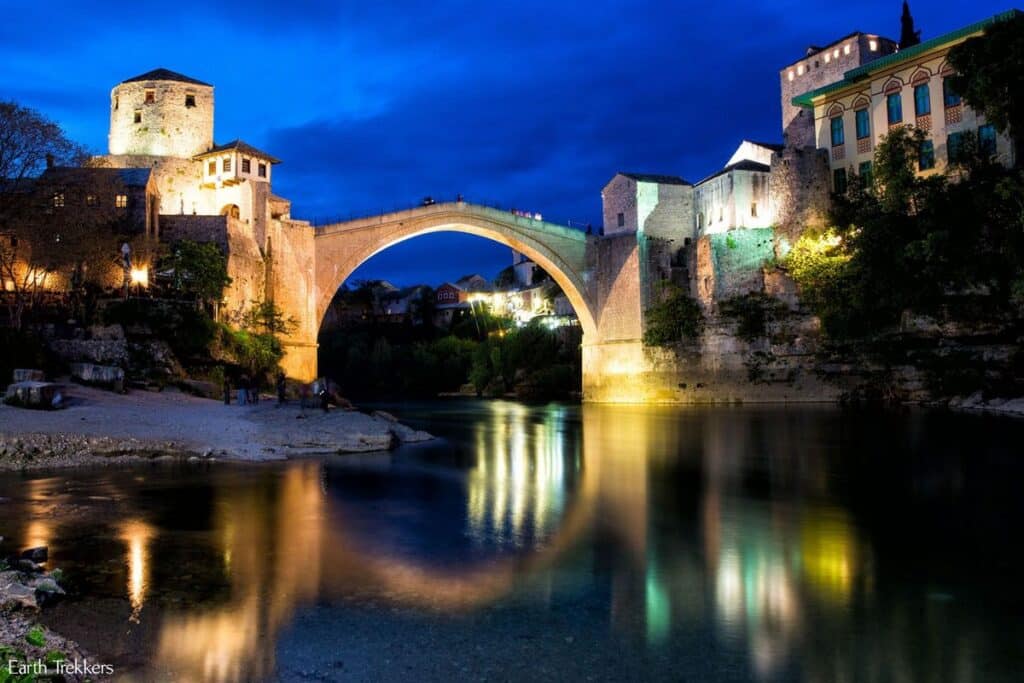
The Stari Most is a famous landmark in Bosnia and Herzegovina. In 1566, the Ottomans constructed the Stari Most, one of the Balkan Peninsula’s greatest works of Islamic Architecture. During the Bosnian War, Croat soldiers destroyed it in late 1993. Fortunately, the Bosnians reconstructed it in 2004. It is translated as “Old Bridge” in English. The Stari Most separates the Bosniak and Croat neighborhoods. The bridge is now a symbol of the city’s pride. Many locals participate in an annual competition in which they jump from the structure and into the Neretva River, even though the water is usually cold.
The Bosnian Pot Describes Something Chaotic
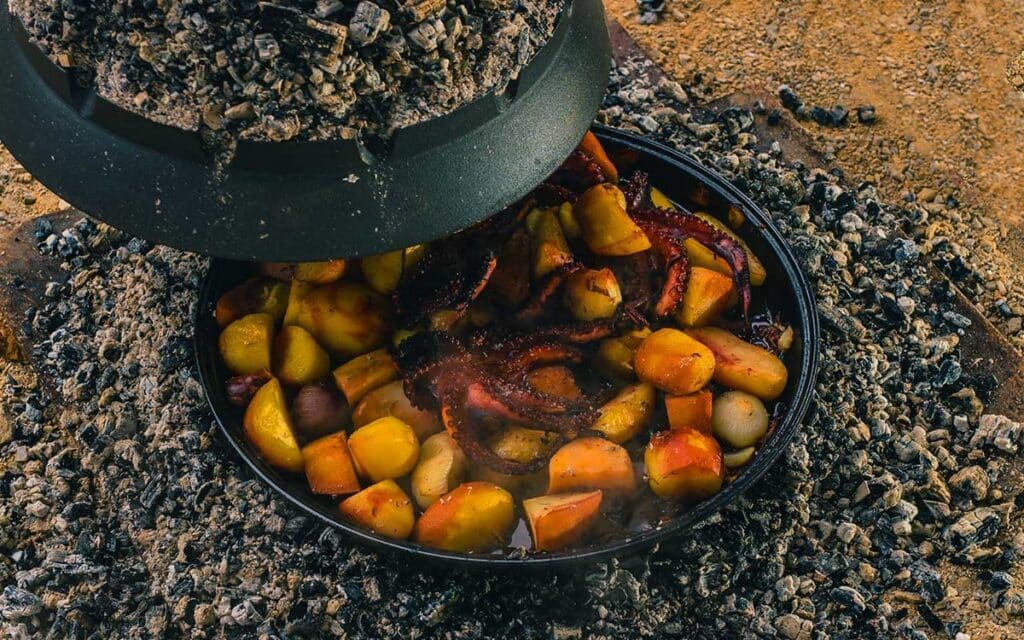
Bosnian Pot is another favorite meal among locals. Its most basic form is a meat-and-vegetable-filled stew. This dish’s ingredients and preparation method may vary widely from one location to the next. It is usually prepared by placing pots on the hearth, and the cooking process may take up to four hours. It’s low in calories and convenient to reheat since it’s prepared with plenty of cooked veggies and pork. The more times you reheat it, the better it tastes. Its appeal has even given rise to a metaphor. When you combine anything out of order, it’s called a Bosnian pot.
Approximately 51% of Bosnians Are Muslims
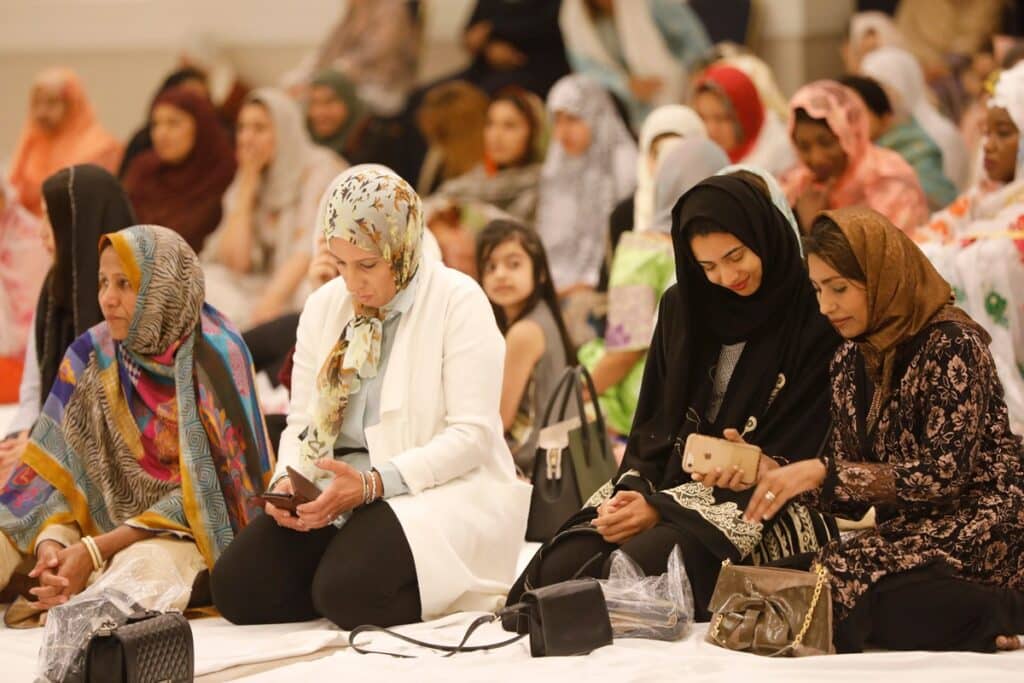
Muslims make up a significant percentage of Bosnia’s population. Around 51% of the population identifies as Muslim, making it the third-highest European proportion. Additionally, it has one of the highest rates of mosques per capita in Europe. Bosnia has a thousand mosques spread around the nation. The Ottoman Turkish introduced Islam to the Slavs of Bosnia. The term “Bosnian Muslims” denotes both religious and national identity. Today, Bosniak is more often used to describe people of this heritage. They have strong ties to Islam, although not all follow the religion. However, more than half of Bosnia’s Muslims identify as non-denominational.
Bosnia Hosted the 1984 Olympics Before the War
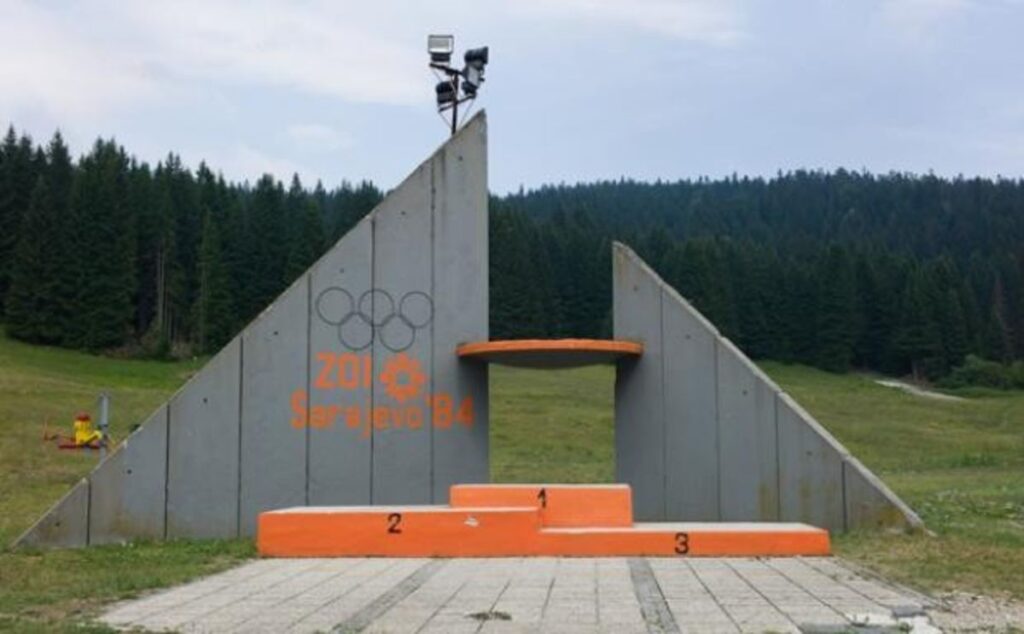
Sarajevo hosted the Winter Games in 1984. It was a huge accomplishment for the Bosnians, especially since it was the first time the games had ever been hosted in a communist state and in a Slavic-speaking country. The Winter Games ushered in a new era of modernity and prosperity for the city and the nation. Enhancements to roads and infrastructure, as well as the addition of new commodities, benefited the international airport. Sadly, the Olympic legacy was mostly erased by the onset of the Bosnian War a few years later, but some artifacts from the games still exist.
Cevapi Is the Country’s National Cuisine
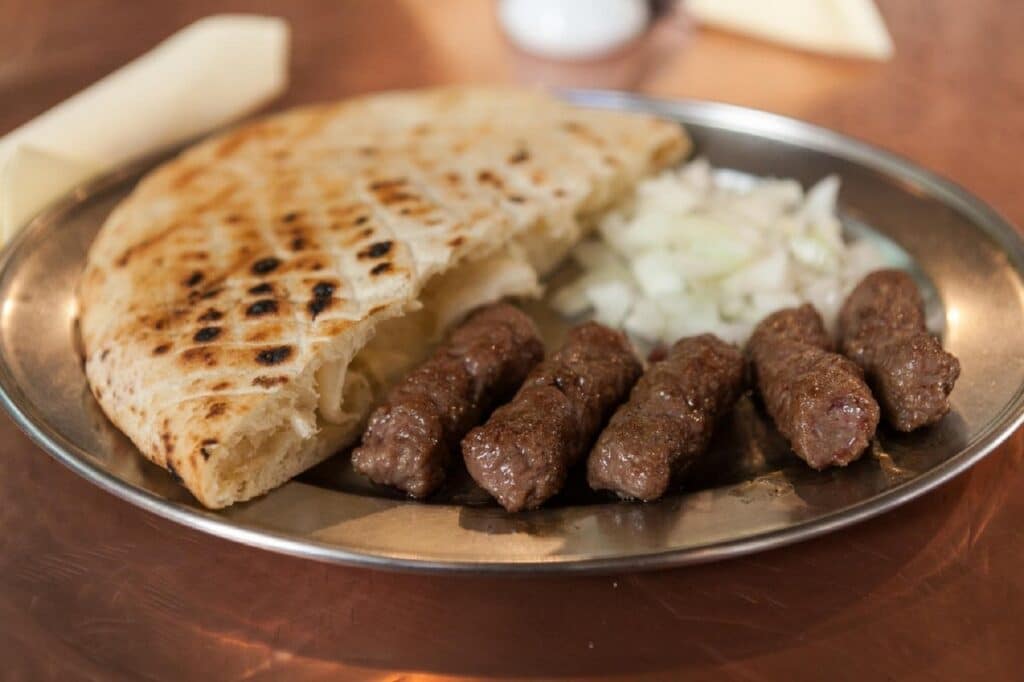
Bosnians all around the country consume cevapi, the national meal. In Bosnia, there are even cooking schools that primarily focus on cevapi. The Ottomans and their troops disseminated the dish over the Middle East, Balkans, and Mediterranean from its Persian origins. You may look for this dish quickly in any city throughout the Balkans, but it is widespread in Bosnia and Herzegovina. You can use two kinds of ground beef to produce Bosnian cevapi. Then, combine them by hand and shape them using a funnel before grilling. The minced beef is typically eaten with flatbread, onion, salt, and sour cream.
Bosnia Is Open to Religious Diversity
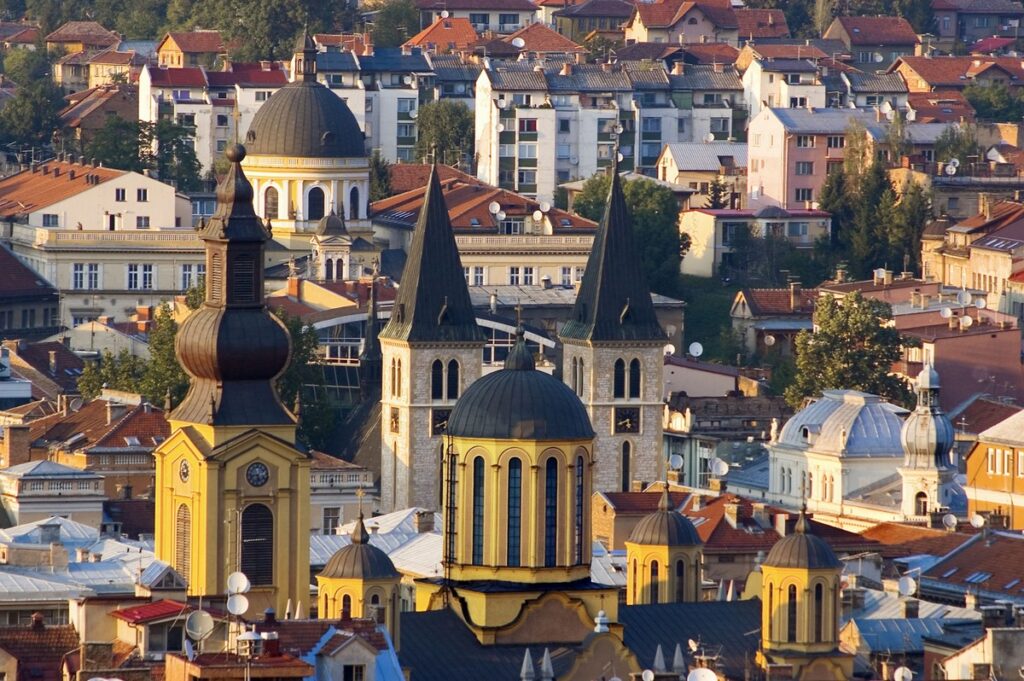
Religious freedom is always a priority in Bosnia and Herzegovina. This country is one of Europe’s most religiously tolerant, despite ethnic turmoil and recent civil war. Due to Ottoman rule in the 15th century, 50.70% of Bosniaks became Muslims. In contrast, the Bosnian Serbs and Bosnian Croats were Eastern Orthodox Christians (30.75%) and Catholic Christians (15.19%), respectively. An additional 2.25% claimed they have non-Christian faith. In European cities, Sarajevo is one of the few that can boast of having a synagogue, Catholic church, mosque, and Orthodox Christian church all in the same area.
The Only Lunar Clock in the World Is in Bosnia
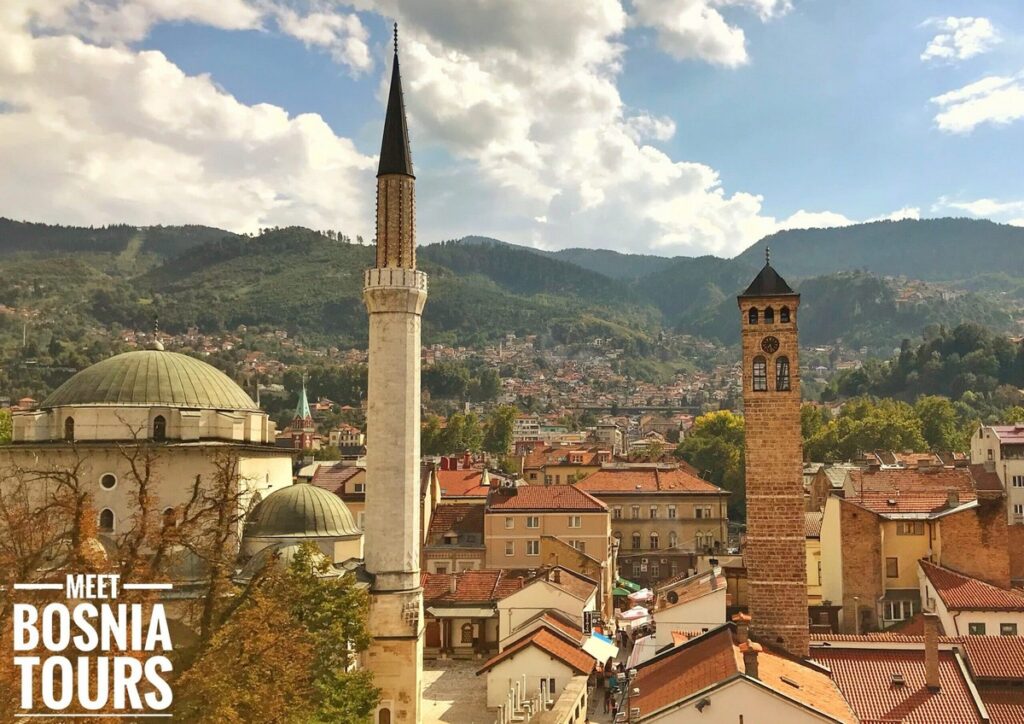
The Old Clock Tower is the only clock tower in the world that preserves lunar time. This clock dates back to the 16th century. It is located in Sarajevo and has one of the highest views in Bosnia and Herzegovina. To help the residents schedule their prayers, the old clock marks time according to the position of the sun and moon so that it strikes midnight at sunset. Since the 1960s, a single clock keeper precisely adjusts the clock every time. He calibrates it every three days to account for the minor time discrepancies caused by the planets’ orbits.
